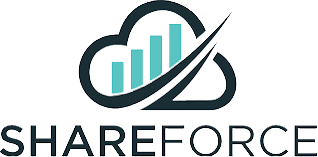Retaining high-quality staff can be expensive, but so can high staff turnover. Businesses are built on making profits; thus, when an employee becomes more costly than the value they add, it makes sense for the two parties to part ways. The challenge is that it is not always easy to measure the true value someone brings to the table, which begs the question … “Are they replaceable”? Yes, but at what cost?
What are the costs involved in replacing an employee?
Some standard costs that come to mind when hiring new staff include recruitment fees, onboarding costs, and other operational fees, but let’s look at a few more that are not as transparent:
- Loss in productivity: Depending on how steep the learning curve in the role is, it may take a new employee months or even years to reach the productivity level of the employee they’re replacing. This assumes they are as capable as the employee being replaced, which is extremely hard to definitively identify through the interview process.
- Employee morale: Building continuity and relationships within teams is essential to successfully running a business. High staff turnover can lead other employees to disengage, affecting performance. Additionally, when resources leave, in the short term, it often results in other staff having to take on additional work until the empty role is occupied, negatively impacting morale.
- Client service and relationships: In any client service role, the personal relationship built between the service provider and client is paramount. Losing a staff member who potentially spent years establishing the trust of a client may directly impact that client satisfaction as they attempt to establish the connection with someone new.
- Loss of in-depth institutional knowledge: The risk of losing knowledge through the loss of skilled and key employees is palpable. Encouraging or even enforcing documentation of processes mitigates this risk but is by no means foolproof. There is no substitute for time on the ground, and the knowledge drain from losing a well-established resource is always a substantial risk.
- The devil you know: Despite a robust interview process, there are no guarantees as to the performance of a new hire and making a mistake on a new hire can hugely cost the business. Additionally, in most jurisdictions dismissing an employee is a challenging task (regardless of how valid the reasons are).
The other side of the coin
In many cases, an employee is replaced for good reason. If an employee’s competence, commitment levels or cultural fit within a business are not where they need to be, it may be best for both parties to part ways. Keeping so-called “bad apples” around the office can be exceptionally bad for a company, potentially leading to a toxic work environment and creating general disturbance within a business.
Furthermore, there may be and often is the case that an employee is simply asking too much for what they bring to the table. In this case, after considering all the above, it may, in fact, be “cheaper” for a business to simply replace an employee when the cost-benefit just does not make sense.
However, when the above are not factors, improving employee retention improves employee engagement, employee health and satisfaction, employee expertise, worker shortages, company morale, and company culture, reduces costs in training and recruiting and increases company profitability.
When one considers the benefits of low staff turnover, HR Managers need to adopt retention strategies that improve employee retention. One such technique is introducing incentives, particularly long-term incentives and awards.
Incentives for employee retention
Offering an employee an incentive motivates them to perform better. A long-term incentive plan encourages employees to achieve long-term company-set goals and stay longer to receive an award. The employee has a long-term personal stake in the company’s success and their award. These incentive awards can be cash-based or share-based (company equity) as an employee share option plan.
How can ShareForce help?
Employee incentive plans can be a vital tool for retaining high-quality employees. ShareForce is a powerful platform that can help HR teams to retain staff and manage their company’s incentive award plans.
Ensuring employees have an easy, live, and transparent way of viewing the future value of their incentives is crucial to a plan’s success.
With ShareForce’s dynamic incentive plan management software, employees can track their awards’ vesting and exercise options, view their pay-out history, and stay up-to-date with any changes to their plans on the participant portal.
To view a demo of the ShareForce Incentive Plan management tool, fill in the form below or visit www.shareforce.net/contact



